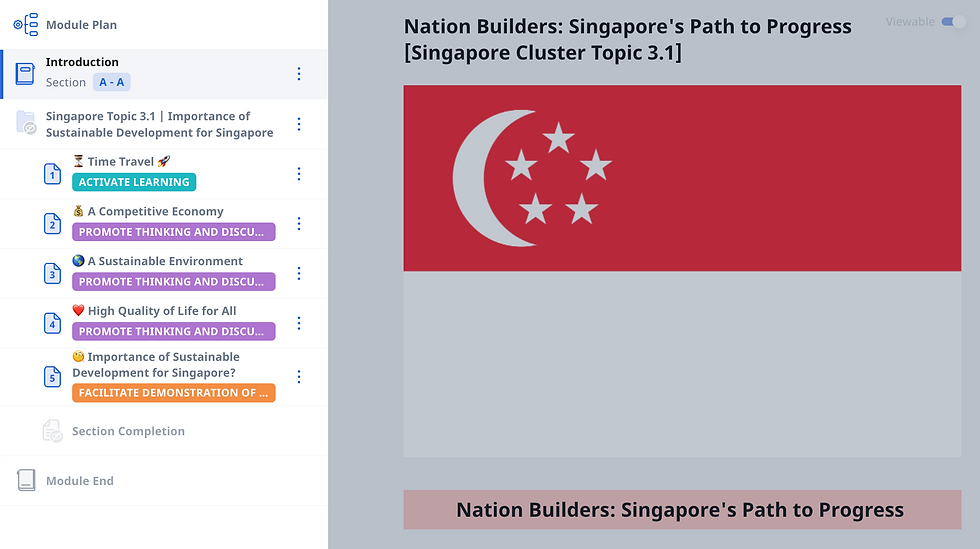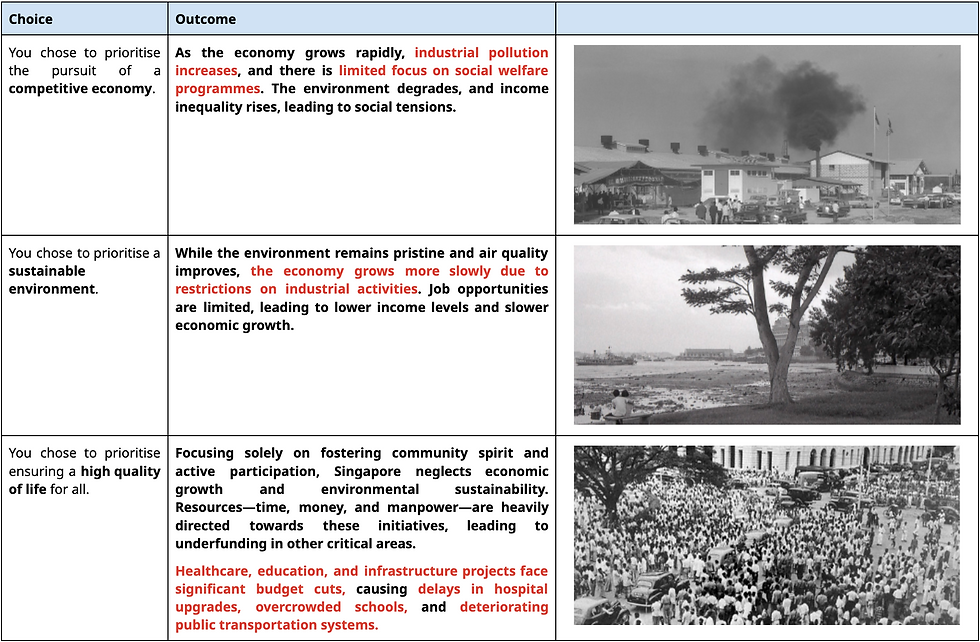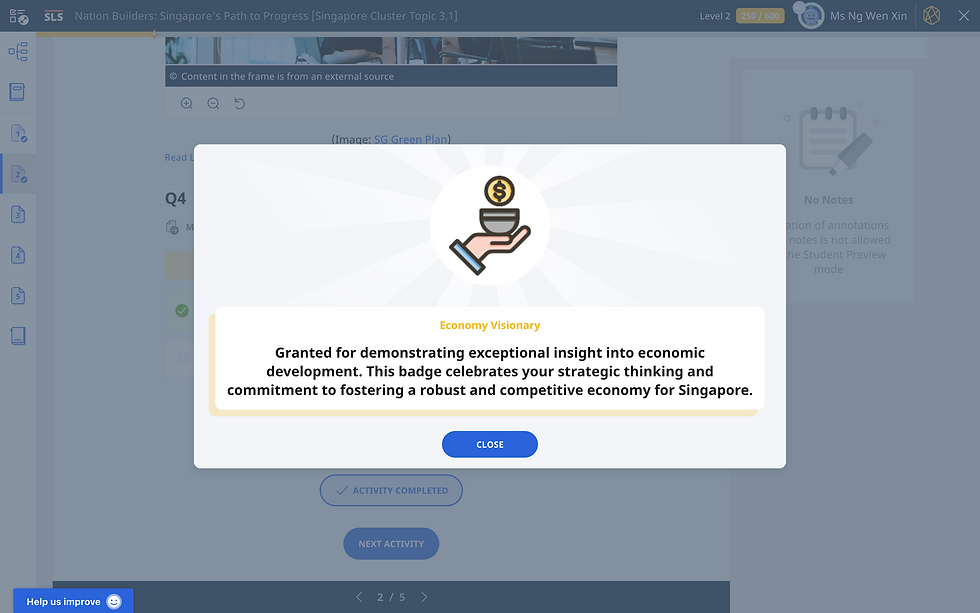#71: SG Cluster NLC Meeting 1 - Notes & Lesson Design
- Wen Xin Ng

- Aug 10, 2024
- 3 min read
Updated: Aug 16, 2024
Table of Contents
Notes
On Curriculum-making:
Importance of clarity of purpose - why we do what we do during the lesson
Consider how each lesson ties in with prior knowledge and subsequent content/ skills to be acquired
Big ideas, connections to be made
Not just focusing on individual content pieces/ activities, but making sure it sits well within a larger curriculum
Proposed organising schema for SG Cluster:
Topic 2: Classification of challenges/ impacts into “internal” and “external” can be useful in helping students appreciate geographical concept of scale + situate Singapore within the regional/global context
Internal
External → larger scale challenges
Homework
Organisation of Topic 3: Sustainable and Resilient Singapore
Textbook:
3.1 Importance of Sustainable Development for Singapore
3.2 Singapore’s Approach to Sustainable Development
3.3 Singapore’s Efforts in Sustainable Development
3.4 Singapore’s Considerations to Sustainable Development
Proposed resequencing:
3.1 Importance of Sustainable Development for Singapore [addressing the WHY]
3.4 Singapore’s Considerations to Sustainable Development
3.2 Singapore’s Approach to Sustainable Development
[“big-picture”]
3.3 Singapore’s Efforts in Sustainable Development [specific efforts → categorised into economic, environmental, social]
Gamified SLS Module
Drawing from the insights I gleaned from the unEARTHing the Singapore Cluster Workshop, I took the opportunity to design a gamified SLS module for Topic 3.1 [Importance of Sustainable Development for Singapore].
Lesson Flow:
Scenario-based learning: Students take on the role of policymakers in the 1960s, charting the direction of Singapore’s development (post-independence).
They will choose to prioritise 1 of 3 aspects of development:
A competitive economy
A sustainable environment
High quality of life for all
Rationale: to get them to better appreciate the considerations behind and trade-offs of each decision
They will be directed to Activity 2-4 based on their choice.
Each activity contains various stimuli to give students a glimpse into the country's past and how it has progressed.
Upon completion of Activity 1-4, Activity 5 gives students the space to reflect on the trade-offs incurred (when they decided to prioritise 1 of 3 aspects of development above) and consider how different priorities can lead to different consequences.
Possible consolidation pointers:
A country’s context can lead to different decisions and/or outcomes
E.g. SG post-independence vs SG now: SG in the present has more resources to invest in green economy; SG's position as a leader in regional sustainable development
Digging deeper: SG's approach to sustainable development often involve addressing multiple challenges with a single strategy.
E.g. Cleaning the Singapore River (achieving economic, social & environmental objectives simultaneously)
E.g. Marina Barrage
Why is it important for Singapore to pursue sustainable development? Consider what happens if we don’t.
E.g. What if we do not pursue a sustainable environment?
Introduce actual case studies of countries grappling with challenges associated with climate change


SLS Features
Game Stories: Having the game stories appear at the start/end of each activity can be useful in reminding students of the context, i.e. Singapore post-independence.
These pop-ups also act as navigational cues, informing students of the next steps.

Collectibles: Unlocking achievements (i.e. collectibles) serve as visible markers of progress, allowing students to track their advancement through the lesson.
Collectibles can also be tagged to lesson objectives. This way, the teacher can monitor students’ progress through the collectibles that they have attained.

>>> This tells me that the student has completed Activity 3: 🌎 A Sustainable Environment. (This collectible is awarded upon completion of Activity 3.)

Short Answer Feedback Assistant (ShortAnsFA): The ShortAnsFA can provide immediate feedback to students for structured questions based on your suggested answers.

Authoring Copilot (ACP): I also got inspiration for possible questions using the ACP, the latest AI-enabled feature in SLS that supports lesson planning for all subjects and levels by generating a module and its corresponding sections, activities and components based on the teacher's inputs.
Below are the fields teachers fill in to guide the ACP in generating an activity, and an example of an MCQ generated by the ACP.










コメント